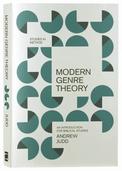Essentials
City-to-City
- Details
- Written by: Andrew Katay
 ANDREW KATAY INTERVIEWED BY STEPHEN HALE
ANDREW KATAY INTERVIEWED BY STEPHEN HALE
Stephen Hale: City to City commenced in Australia around 2010; and you became the CEO around 2014, is that right?
Andrew Katay: Yes. City to City had made a connection here at the end of 2010, with the first event in 2011. Tim Keller was not inclined to lead a conference here in Australia unless it would lead to some tangible movement in the church, but by 2014 there was this nascent city expression that had already begun to emerge in the couple of years prior.
Stephen Hale: There was the Trinity Network in Adelaide, and City on a Hill had started in 2007.
Andrew Katay: Yes, so Tim had a level of confidence that if he did come out, it could achieve what he hoped: a movement. And that’s when City to City really became a public thing. We realised that with the conference, we needed proper governance, so we created a company limited by guarantee with a proper board and so on. That enabled us to employ some staff and function as a proper organisation from the end of 2013. The “Pastors and Planters” conference, which many remember, happened in 2014, with 800 or so people packed into the Wesley Theatre.
Called to Create: My Journey in Church Planting
- Details
- Written by: Amy Footson
When I first sensed a call to ordination, I was immediately drawn to church planting. I had this deep desire to see Christian community and worship happen in creative, non-traditional ways—especially in spaces that the church often overlooked. That desire really took shape during my time in the UK.
In Chester, I got involved in something called “Night
Church,” where we opened the church from 10pm to 2am on Saturday nights. We ministered to people who were out clubbing, offering prayer, conversation, and simply a safe place to be. It was raw and beautiful, and it made me realise that church doesn’t need to look a certain way to be deeply meaningful.
Later, in London, I became part of a “Café Church” that met every Sunday evening. It was relaxed, relational, and created space for people who were curious about faith but didn’t feel comfortable in a traditional service. I also visited a church on a canal boat that was reaching out to some of London’s most unreached estates. Seeing that kind of creativity in mission inspired me. Church planting has always been a passion of mine—especially when it means forming new communities that meet people where they are.
When I was ordained a deacon in July 2023 in the Anglican Diocese of Melbourne, I began my curacy as Assistant Curate and Cathedral Church Planter at St Paul’s Cathedral. It was a unique role—one that combined the traditional elements of ministry training with the opportunity to pioneer something new. Out of that, we planted Gather at St Paul’s —an evening congregation aimed specifically at university students and young adults.
Before we began, there weren’t many students or young adults regularly connected to the Cathedral. Our vision was to create a space where people could gather for intentional community and worship, especially those who might be exploring faith or hadn’t yet stepped into church before. I wrote a new eucharistic liturgy for this community, which was later authorised by the Archbishop for use in that setting. The service focused on creative expressions of worship and prayer, and was intentionally different from what the Cathedral already offered.
We wanted it to be accessible—both for Christians and for those who weren’t sure what they believed. It was important to me that it felt like a safe, welcoming space. Community dinners and Bible studies helped shape a strong sense of belonging and gave people opportunities to ask questions and grow in their faith. For many, Gather at St Paul’s was their first experience of church—and I still find that incredibly moving.
Now, I’m part of the Church Planting and Revitalisation team for the Anglican Diocese of Melbourne. I’ve been working with the team to develop new learning communities for both emerging and experienced church planters. It’s such a joy to help others explore what church could look like in their own context—to dream, experiment, and follow the Spirit’s leading.
My passion is to see young people empowered to plant new expressions of church in unreached areas. I believe creativity has a unique power to connect with people’s hearts and minds—to show them that they are deeply loved, even if they’ve never stepped into a church building.
More than anything, I see my calling as being a bridge between the church and the world. I want to make the church accessible to those who don’t yet know God and to share His love in ways that are creative, honest, and deeply grounded in relationship.
For me, church planting isn’t just about strategy or structure—it’s about people. It’s about creating spaces where anyone, no matter their background, can encounter the love of Jesus. And it’s about trusting that God is already at work in the world, inviting us to join Him in the beautiful, risky, hopeful work of planting something new.
Amy Footson is Assistant Curate to Church Planting (Communications and Training), St Paul’s Cathedral, Anglican Diocese of Melbourne.
EFAC Victoria Update
- Details
- Written by: TIm Collison
Last year EFAC VIC held its first annual meeting since 2019. It elected a new chair, Tim Collison; a new treasurer, Pedram Shirmast; and a new secretary Xiaoxi Lou. EFAC VIC also held a spiritual retreat led by Peter Adam last year. This year it held a briefing meeting about the importance of the election in the Melbourne Diocese, and has facilitated a number of churches getting grants to send their teenagers to Leader's in Training Conference. We are pleased with the election of Bishop Ric Thorpe as the Archbishop of Melbourne.
Tim Collison is Assistant Minister at St. Mark's Anglican Church Chair of EFAC Victoria and Secretary of EFAC Aust.
Church Planting Story
- Details
- Written by: Leili Shirmast
 I never imagined I would one day plant a new ministry in one of the most iconic places in Melbourne. But one afternoon, as my husband Pedram and I stood in St Paul’s Cathedral, we watched people stream in—tourists, students, and families, wandering the building, taking photos, admiring its beauty. Then we heard it: Farsi, Turkish, Arabic. Familiar languages that stirred something deep in us. When we later learned that over 1,500 people visit the Cathedral every day, it sparked something in our hearts. How, we wondered, could we share the Gospel with even a few of them?
I never imagined I would one day plant a new ministry in one of the most iconic places in Melbourne. But one afternoon, as my husband Pedram and I stood in St Paul’s Cathedral, we watched people stream in—tourists, students, and families, wandering the building, taking photos, admiring its beauty. Then we heard it: Farsi, Turkish, Arabic. Familiar languages that stirred something deep in us. When we later learned that over 1,500 people visit the Cathedral every day, it sparked something in our hearts. How, we wondered, could we share the Gospel with even a few of them?
We began praying, listening, and discerning with others. Some people encouraged us to start a new outreach. After seeking the Spirit’s guidance and receiving confirmation, we knew God was opening a door. That vision became reality on 16 March 2024, when we launched a new multicultural midday service at the Cathedral, beginning with a celebration of Nowruz (Persian New Year). I never expected to start this new ministry. But when I thought about the deep spiritual hunger among those who speak my own language, I realised God had been preparing me all along.
Editorial Winter/Spring 2025
- Details
- Written by: Stephen Hale
The past few months have been especially important for the future of the Anglican Church in Australia. On Saturday 19th July Bishop Dr Mark Short was elected as the Primate of the Anglican Church of Australia. Mark has been Bishop of Canberra and Goulburn since 2019. Prior to that he was the National Director of BCA. Mark is an EFAC Australia Vice President. The last evangelical Primate was Sir Marcus Loane (Sydney). Prior to 1982 the most senior Metropolitan became the Primate. After that they have been elected. Do pray for Mark and Monica as he assumes this weighty extra responsibility in November and as he leads the Anglican Church in Australia and represents the Anglican Church of Australia internationally. Pray also for the Diocese of Canberra and Goulburn as they seek to support Mark as he takes up this new role.
The other exciting news in the past few months has been the election of Bishop Ric Thorpe as the Archbishop of Melbourne. Bishop Ric is the Bishop of Islington in the Diocese of London and has a national role in church planting and revitalisation in the Church of England. Bishop Ric is a regular visitor to Australia and will be a real gift to the Australian church when he starts in late November. Peter Adam has written a great reflection piece on this significance of his election.
This edition of Essentials is a bumper edition in every sense of the word. I had an above average number of responses to invitations to contribute to the Winter edition, so we decided to put out an expanded Winter/Spring edition! You’ll also notice that we have included two copies in each sleeve.
The focus of this edition is Church Planting. Inside is a very stimulating interview with Andrew Katay one of the key Anglican leaders in this area. We probably all know about Trinity Adelaide and City on a Hill but most of us don’t know about the remarkable way both have evolved and expanded in the past decade or so. We have some lovely stories from two church planters from Melbourne as well as a range of other great articles.
BISHOP STEPHEN HALE
EDITOR
Book Review: Modern Genre Theory
- Details
- Written by: David Mitchell
 Modern Genre Theory: An Introduction for Biblical Studies
Modern Genre Theory: An Introduction for Biblical Studies
Andrew Judd
Zondervan Academic 2024
Reviewed By David Mitchell
Judges 19 is one of the most confronting stories in the Old Testament. How are we supposed to read it? Is it something of a cautionary tale about the likely outcome for those who commit adultery? Perhaps, like a modern horror film, its designed specifically to make us squirm and shrink away from it. Or, perhaps, it’s better understood as being a piece of wisdom literature with complex truths about life under the sun being conveyed through the narrative. Or, would we be better understanding it as simply another dot point in the decline of the Jewish nation during the period of the judges as they await a king? Or is it some mix of all of things?
How we read a given passage of scripture depends significantly on what genre we assign it. Hence the battle, say, between the literal six-day creationist and the theistic evolutionist, or between the reader who takes Jesus’ parable of the rich man and Lazarus (Luke 16:19–31) as speaking about the actual intermediate state and the person who thinks it does not. On all sides of such debates, people can agree on the authority of the Scriptures and yet be at odds as to what the scripture in question is authoritatively teaching.
How to not be anxious, in an anxious age?
- Details
- Written by: Stephen Hale
 How to not be anxious, in an anxious age?
How to not be anxious, in an anxious age?
STEPHEN HALE
Do not be anxious about anything, but in every situation, by prayer and supplication, with thanksgiving, present your requests to God. Philippians 4:6
We’re all familiar with St Paul’s wonderful words in Philippians 4. Yet we all know the challenge of them becoming a reality for us. There is so much to be anxious about. In fact, the statistics on the rise of mental health challenges in a place like Australia are striking. As I understand it these are consistent with the numbers in other western nations.
The Australian Bureau Statistics reports that in 2024 • 1 in 5 adults will experience mental health problems throughout a year
- 1 in 4 adolescents have a mental health illness
- 1 in 3 girls and 1 in 5 boys suffer from an anxiety or disorder
- 1 in 7 primary school kids have a mental health illness
